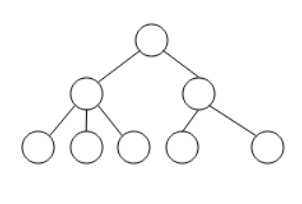Hierarchical Information Model
The Hierarchical Information Model (HIM) is an initiative by COVESA to define a syntax for how to define taxonomies containing different types of information. The documentation, source code and releases can be found in the HIM github repository.
The information of a domain that is described using HIM is represented in a graph made up of a tree structure with parent-child relationships,
as shown in Figure 1.
 *Figure 1. HIM graph structure
*Figure 1. HIM graph structure
The model provides a structured solution to a scenario where an entity, e. g. a server, manages multiple domain taxonomies.
A domain can in the HIM context be defined with the help of two dimensions:
- a ‘coherent’ dimension which represents information related to something that is logically coherent.
- Examples are a car, a truck, a trailer, an airplane, etc.,
- an ‘information type’ dimension that is used in the description of a coherent dimension using a specific information type.
- The currently defined information types are listed below.
- Data
- Service
- Type definitions
- The currently defined information types are listed below.
HIM specifies rule sets for the different information types that can then be used to define taxonomies for different coherent domains.
The creation of taxonomies for different domains is not done within the HIM project, it is expected to be done by other projects using the HIM rule sets. One example of such a project is the Vehicle Signal Specification project.
The documentation is structured in the different rule sets shortly described below.
HIM Data Rule Set
Rules for describing data produced/consumed by resources that can be represented by static or dynamically changing data values.
HIM Service Rule Set
Rules for describing services that can be represented by procedure signatures.
HIM Type Definition Rule Set
Rules for describing complex datatype definitions, specifically struct definitions.
HIM Configuration Rule Set
Rules for how a set of domain taxonomies is defined.
HIM Common Rule Set
Rules that are commonly used in the other rule sets.
HIM profiles
The HIM model supports different information types, and a server exposing an interface that uses HIM for its data representation may have to implement features that its clients have no interest in. A server to be used in an environment where the Data type (i. e. classical signals) is used can then be implemented without support for a service oriented architecture (SOA). To support scenarios like this HIM specifies the three different profiles shown below.
A client that issues an inquiry on what profile is supported shall receive information on that in the response.
HIM Data Profile
The HIM Data profile excludes use of trees that contain the Service data information type. This profile is for example compatible with the VSS tree.
HIM Service Profile
The HIM Service profile excludes use of trees that contain the Data information type. This profile can for example be used in “pure” SOA architectures.
HIM All Profile
The HIM All profile supports use of trees that contain data of any HIM specified information type. This makes it possible for a server to serve clients that wants to have access to both “classical signals” and services represented by function calls.
HIM enablers
HIM enables a single server implementation to support use cases from multiple domains, e. g. telemetry via a tree such as the COVESA VSS tree, or diagnostics via a tree referring to diagnostics data, or trees describing the data or services of other domains.
The same server can expose access to both data (signals) and services (procedures). Instead of developing a new server and possibly also define a new interface when a new domain is to be served, a new tree containing the signals or services for the domain is created and linked to the server via the HIM configuration file.
Heritage
The ideas behind HIM originated in the COVESA VSS project, when interest started to be raised for using it for of not only Data but also service data, and for different domains than the legacy VSS passenger car domain. This may explain why examples in this documentation are often taken from that domain.